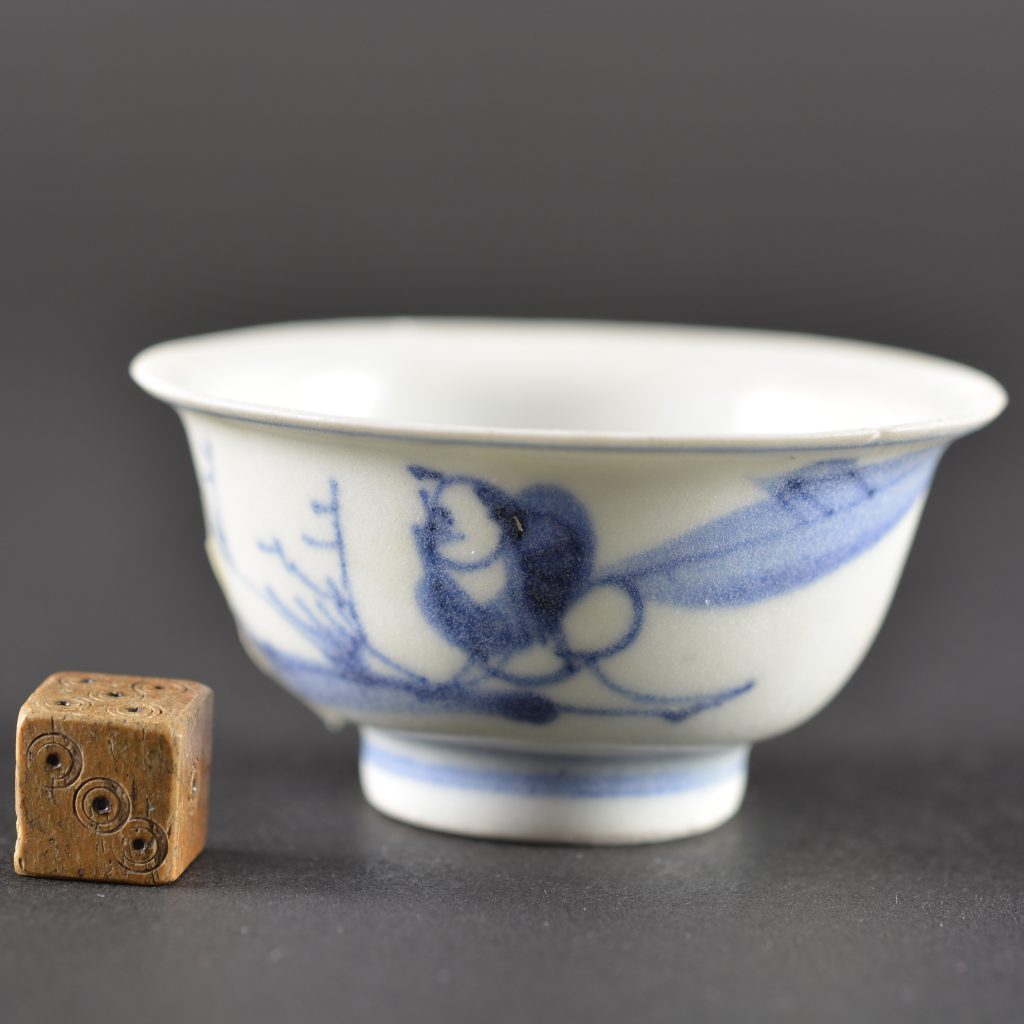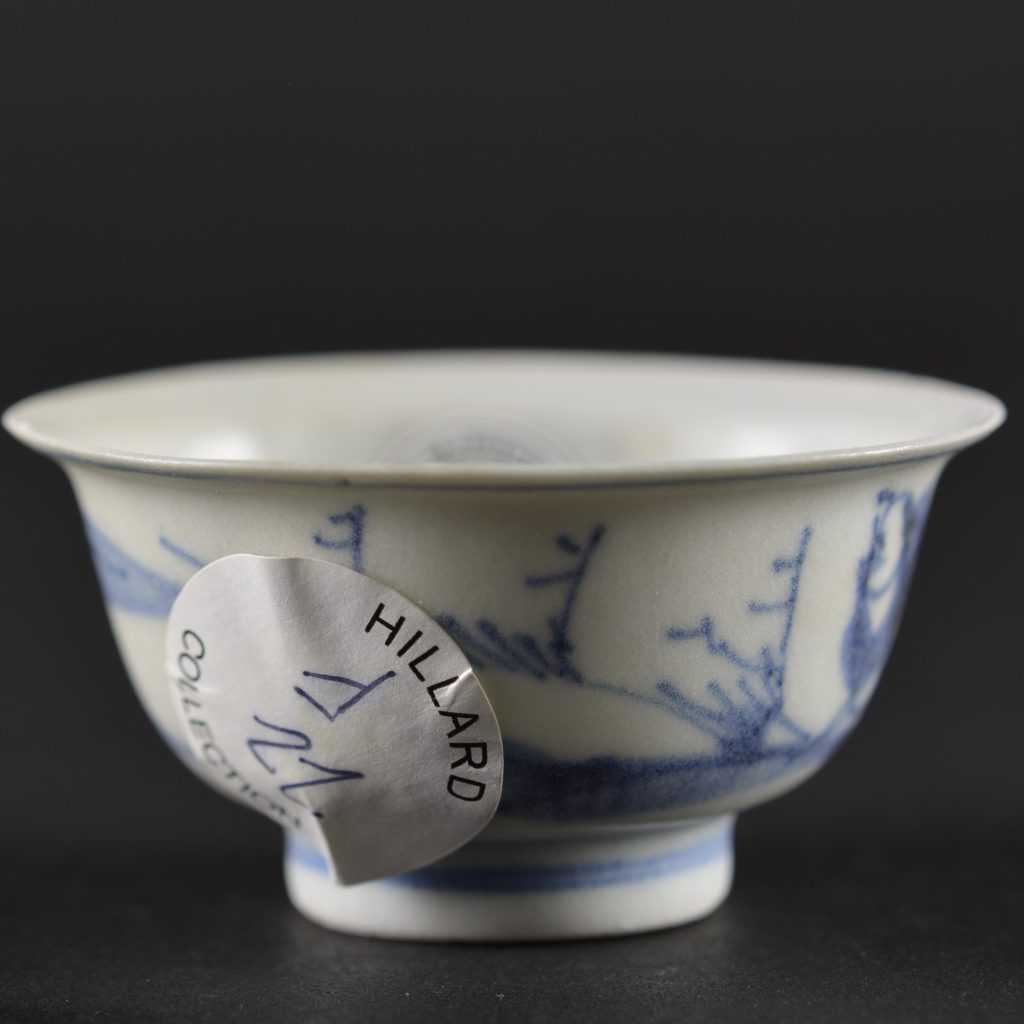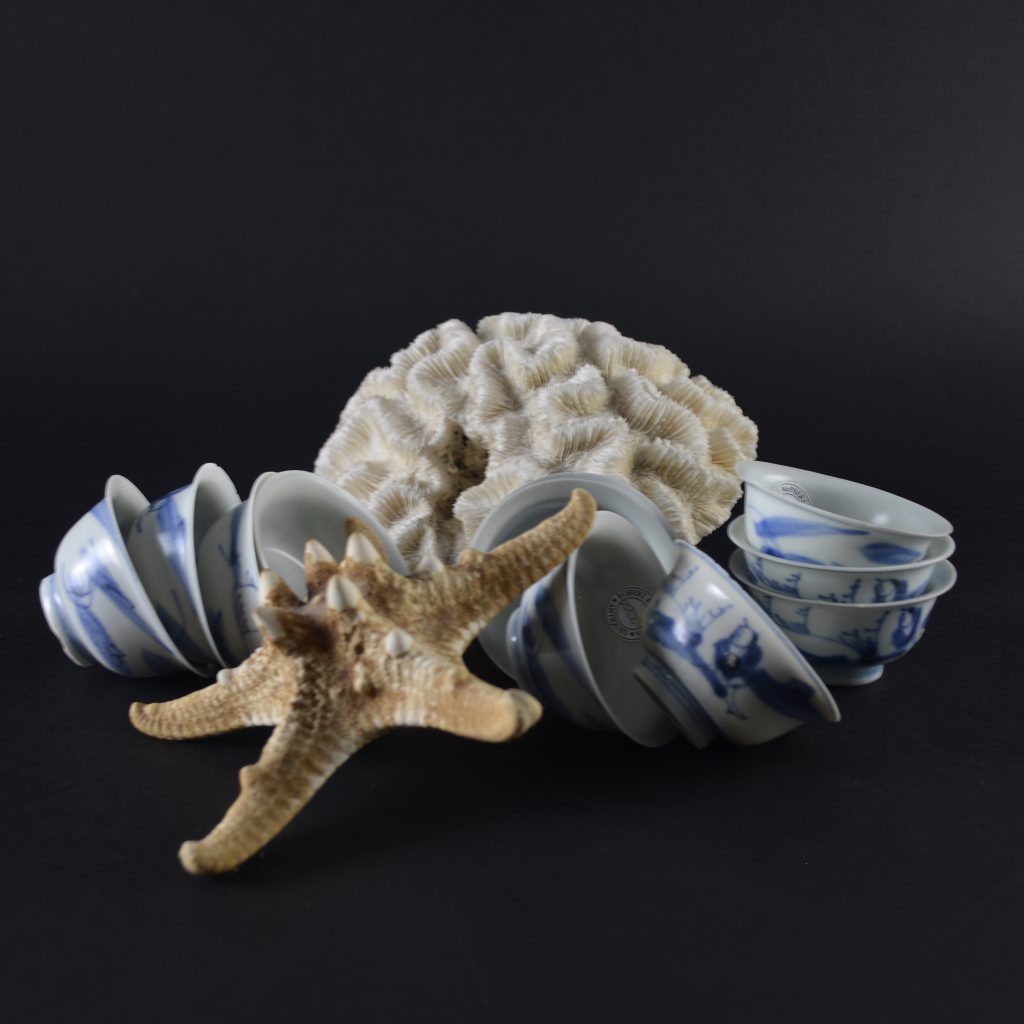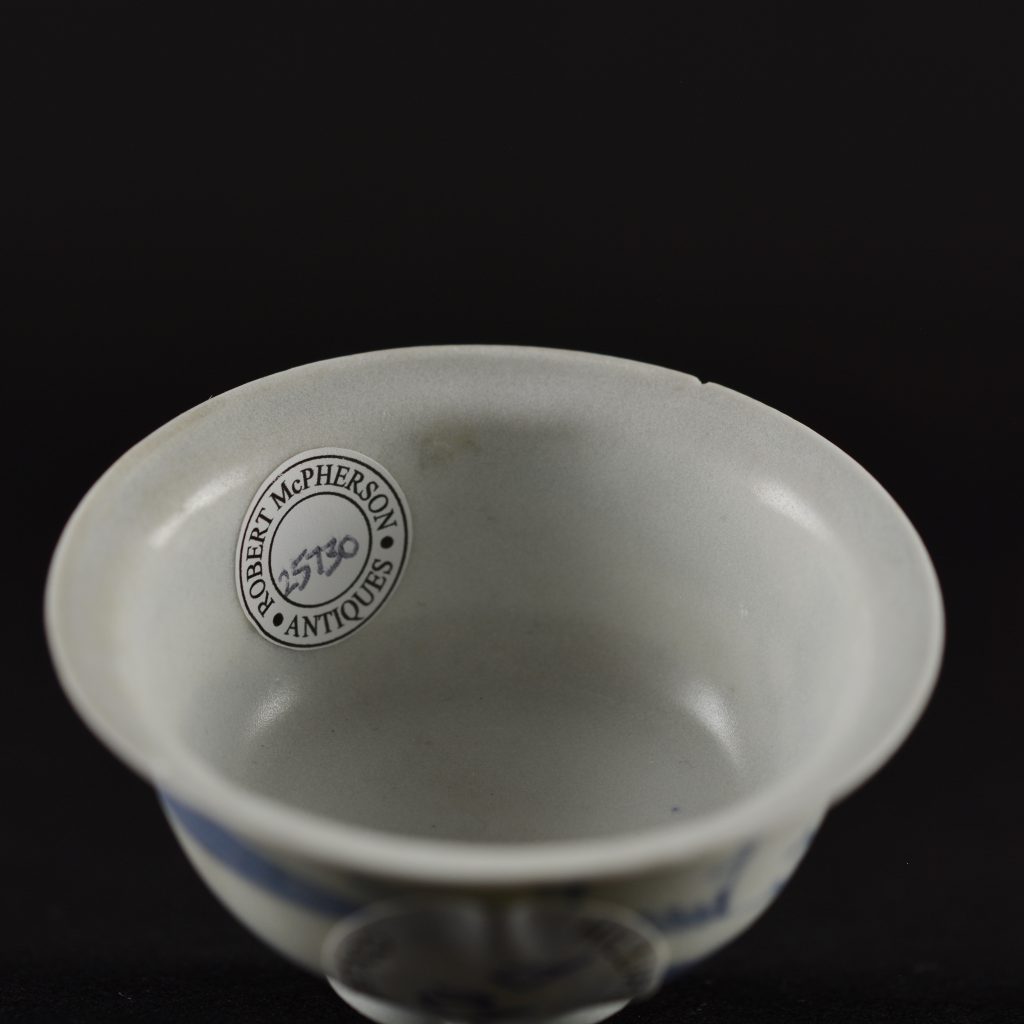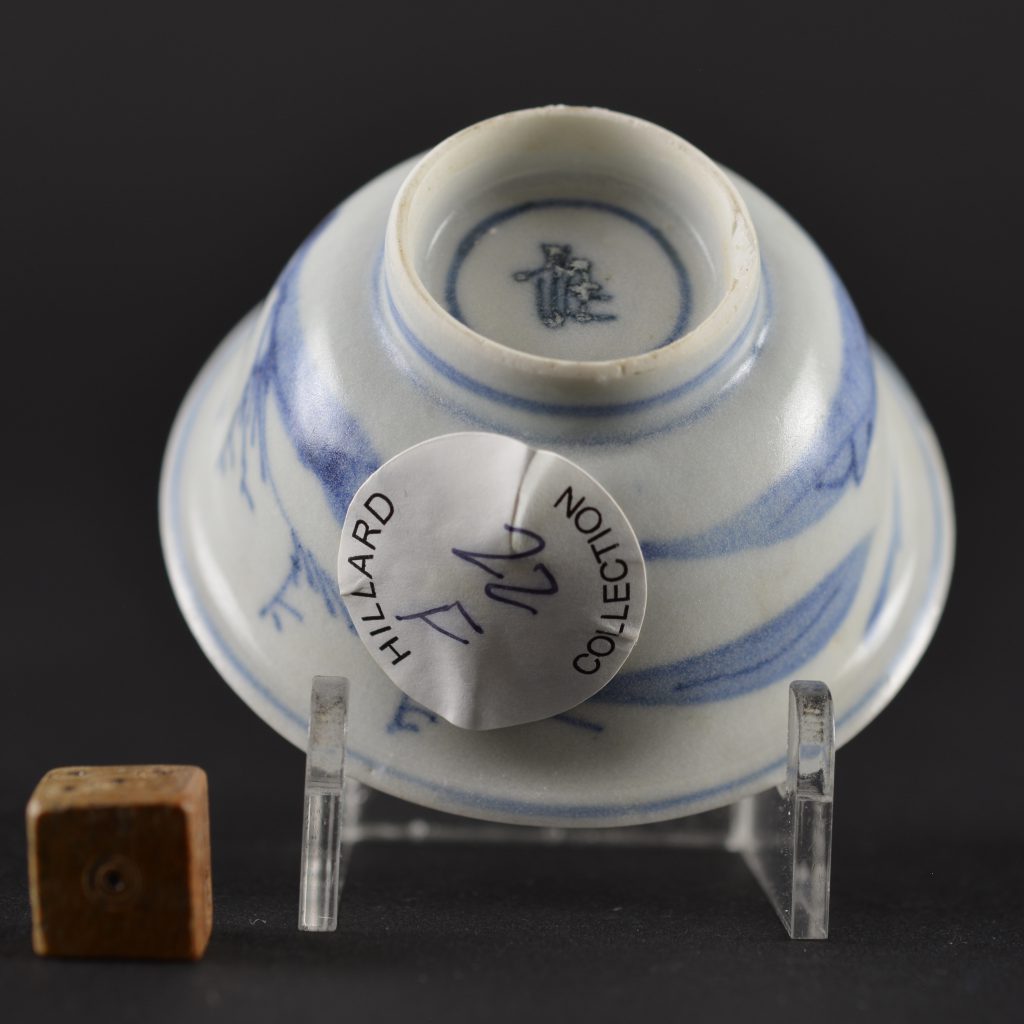
A Transitional Porcelain Cup From The Hatcher Cargo
A Transitional Blue and White Porcelain Wine Cup. Late Ming Dynasty, Chongzhen Period c.1643. The thinly potted flared cup is decorated in cobalt-blue with a seated figure in a landscape, the base has a ‘shop-mark’.
SOLD
- Condition
- In good condition with a chip to the footrim, minimal glaze abrasion.
- Size
- Diameter : 6.7 cm cm (2 2/3 inches)
- Provenance
- Fine And Important Late Ming And Transitional Porcelain, Recently Recovered from an Asian Vessel in the South China Sea. Property of Captain Michael Hatcher. Christie`s Amsterdam 14th March 1984. The catalogue shows seven lots totalling 212 cups in total.
- Stock number
- 25730
- References
- Christie's auction catalogue : Fine And Important Late Ming And Transitional Porcelain, Recently Recovered from an Asian Vessel in the South China Sea. Property of Captain Michael Hatcher (Christie`s Amsterdam 14th March 1984) pages 63 to 64, illutrated on page 61. The Hatcher Porcelain Cargoes, The Complete Record (Colin Sheaf and Richard Kilburn, Phaidon, Christie's. 1988. ISBN 0-7148-8046-9. Page 67, plate 98. A further Transitional Blue and White Porcelain Cup of this design is in the British Museum, see Catalogue of Late Yuan and Ming Ceramics in the British Museum.(Jessica Harrison-Hall.The British Museum Press, 2001. ISBN 0-7141-1488-X.) page 364, item 12:30.
Information
The Hatcher Cargo :
The Hatcher Cargo was the first porcelain cargo from a shipwreck to come on to the market. It was sold in several auctions in Christie`s Amsterdam in 1984 and 1985. It remains one of the most important cargoes of shipwreck ceramics ever recovered, despite the lack of historical evidence recorded by the salvage team. Two porcelain covers dated 1643 helped date the wreck but this needed corroborating to give a firm date of the wreck and it`s cargo.
The dating of the porcelain from the Hatcher Cargo is based on several elements. Firstly, the ceramics recovered form a coherent group, in other words they appear to all have been made at the same time. Secondly comparative dating was used to corroborate the date of the porcelain. For example, blue and white porcelain dishes decorated with a coiled serpent recovered from the Hatcher Cargo match an important dish from the fall of the Ming dynasty, formerly in the Percival David Foundation, now at the British Museum London, this dish can be dated to 1644 - 1645.
Other comparative dating is also consistent with the presumed date of the porcelain. However, the most important dating reference remains the two covers recovered from the wreck datable by inscription to the spring of 1643. Although the the Ming dynasty officially ended in 1644 the transition from the Ming to the beginning of the Qing was messy and protracted. The porcelain made during this period of civil war and chaos is referred to as `Transitional Porcelain`. It covers the period from the last Ming Emperors until the early years of the Kangxi period, which is normally given a date of about 1620 to 1670 . The Hatcher Cargo is a vital dating tool for this previously poorly understood period of Chinese porcelain production.

